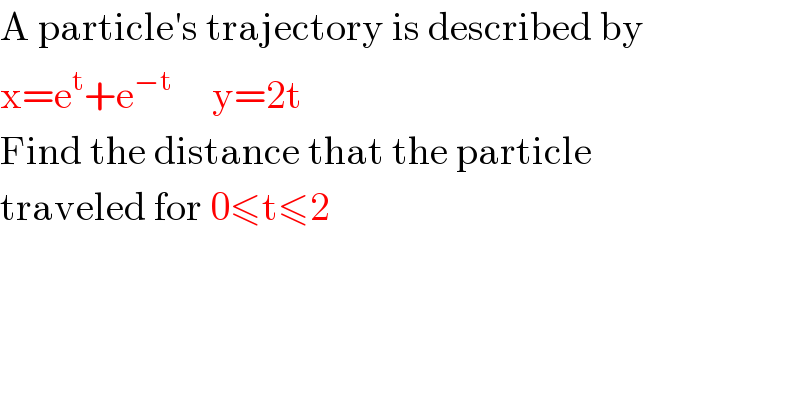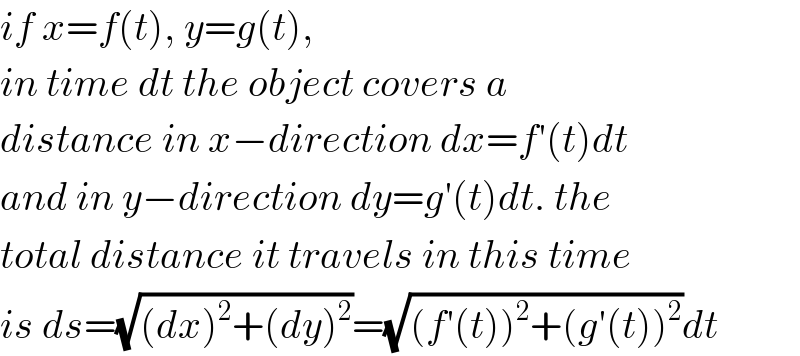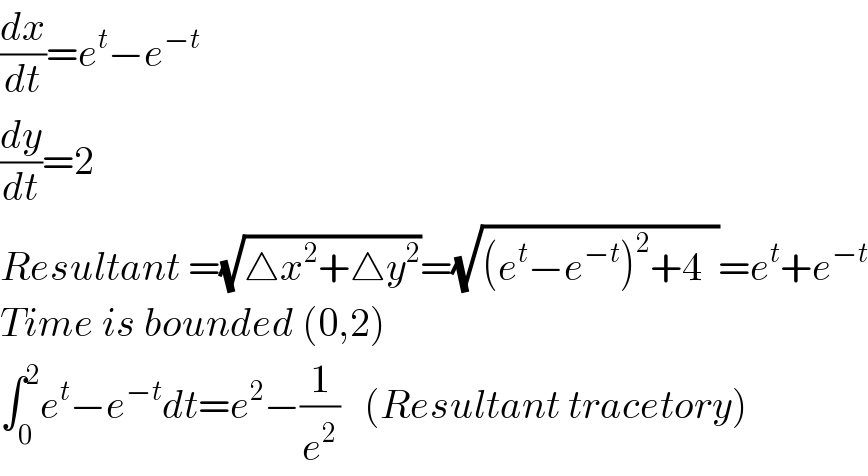
Question and Answers Forum
Question Number 103400 by abony1303 last updated on 14/Jul/20

Commented by abony1303 last updated on 14/Jul/20

Answered by mr W last updated on 14/Jul/20
![dx=(e^t −e^(−t) )dt dy=2dt ds=(√((dx)^2 +(dy)^2 ))=(√((e^t −e^(−t) )^2 +4)) dt =(e^t +e^(−t) )dt s(t)=∫_0 ^t ds=∫_0 ^t (e^t +e^(−t) )dt=[e^t −e^(−t) ]_0 ^t =e^t −e^(−t) ⇒s(2)=e^2 −(1/e^2 )](Q103402.png)
Commented by abony1303 last updated on 14/Jul/20

Commented by mr W last updated on 14/Jul/20

Commented by mr W last updated on 14/Jul/20

Answered by OlafThorendsen last updated on 14/Jul/20
![0≤t≤2 ⇔ 0≤y≤4 x = e^t +e^(−t) = 2cht = 2ch(y/2) (dx/dy) = 2×(1/2)sh(y/2) = sh(y/2) d = ∫_0 ^4 (√(1+((dx/dy))^2 ))dy d = ∫_0 ^4 (√(1+sh^2 (y/2)))dy d = ∫_0 ^4 ch(y/2)dy d = [2sh(y/2)]_0 ^4 = 2sh2 = e^2 −(1/e^2 )](Q103405.png)
Answered by Dwaipayan Shikari last updated on 14/Jul/20

